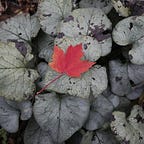“BALANCE IS NOT SOMETHING YOU FIND,
IT'S SOMETHING YOU CREATE.”Jana Kingsford
Spring is a great season, with trees bearing new leaves, beautiful blooming flowers, and cool breezes. But, with the season there are some issues, one of the biggest issues is for those with pollen allergies. As pollen starts to fly and move around thanks to the breeze and insects, those affected most by pollen are left to wonder why is there so much pollen? This is a question that can be answered by a large debate about botanical sexism that started from a viral Tik Tok.
How the Conversation Started
Ellie Botoman, 24, created a short TikTok in which she decided to talk about the fact that there are a lot of male trees that had been planted by urban/city planners and this was attributed to the fact that female trees can be “messy” (bear fruit). She goes on to describe that this causes pollen to stay in the air longer as the male trees release so much due to there being fewer female trees and competition being high.
In this TikTok, she cited a horticulturist Thomas Ogren, who coined the term ‘botanical sexism’. Thomas Ogren wrote Allergy-Free Gardening: The Revolutionary Guide to Healthy Landscaping in 2000. He explains that due to wanting to get rid of the tree that exacerbated his wife’s pollen allergies, through trying to find the source tree creating the pollen he found out that all the trees in his neighborhood were males trees/ dioecious trees (a tress that produced only male flowers or a tree that produces only female flowers/ single-sexed).
Ogren had discovered the use of male trees was a preference as they did not produce fruit and therefore were not as messy as female trees. In 2012 Ogren worked with Reactine and did a cross-Canada allergy audit, and the result for this was that 80 to 85% of the urban trees in Canada were male.
How Did This Happen?
In the USA before the year 1970, there was an abundance of American Elm trees and so there was no need to pay attention to any other types of trees to line up the streets. Unfortunately, due to the Dutch elm disease, 77 million trees had died, causing the need for new trees to be planted, and thus the trees that were chosen were the clonal male. Due to the new trees planted, pollen allergies have become very common and are now causing health problems such as ashtma, and the more people are affected, the bigger the impact on our health care.
Climate Change
In the context of climate change, we are seeing the chances of pollen allergies becoming worse, as Eric Lavigne an epidemiologist and Health Canada researcher states “that CO2 is a stimulus for those plants and trees to produce more pollen and to increase the allergenicity of the pollen as well”.
A study was done looking at pollen across Canada and America, it’s finding showed that pollen season was starting 20 days earlier and the amount of pollen that was being released was 21% more since the year 1990, a large factor in this is climate change. Plants produce more pollen for longer periods of time as the temperature increases as well as with increased amount of CO2 that is released into the atmosphere.
How Does This Effect Canadians?
An average of 20 percent to 25 percent of Canadians have allergies to one or more types of pollen, experts believe pollen counts have risen higher than normal in 2021 in parts of the country. This pollen can come from various trees and shrubs therefore not only are trees a culprit to the rising counts of pollen but shrubs like ragweed are also to blame.
The rise of pollen is a burden for Canada financially as the health problems can cause Canada millions of dollars in both healthcare and business revenue.
Furthering the Conversation
As this topic started to gain momentum, many people saw this as an issue while others saw this as misinformation. As people become more interested in this topic it is crucial to read more about the various types of trees that are planted across the country and better understand the reasoning behind why there were planted.
What do you think? Is botanical sexism fact or fiction?
Anderegg, W. R., Abatzoglou, J. T., Anderegg, L. D., Bielory, L., Kinney, P. L., & Ziska, L. (2021). Anthropogenic climate change is worsening North American pollen seasons. Proceedings of the National Academy of Sciences, 118(7). https://doi.org/10.1073/pnas.2013284118
Guardian News and Media. (2020, May 16). How urban planners’ preference for male trees has made your hay fever worse. The Guardian. Retrieved from https://www.theguardian.com/environment/2020/may/16/how-urban-planners-preference-for-male-trees-has-made-your-hay-fever-worse
Landwehr, J. (2021, September 3). You can blame your allergies on ‘botanical sexism,’ TikTokers say. Verywell Health. Retrieved from https://www.verywellhealth.com/tiktok-what-is-botanical-sexism-5195474
Malenfant, P. (2022, April 11). Climate change might be aggravating Canada’s allergy season, but solutions are within reach. The Globe and Mail. Retrieved from https://www.theglobeandmail.com/canada/article-climate-change-allergy-season/
Ogren, T. L. (2015, April 29). Botanical sexism cultivates home-grown allergies. Scientific American Blog Network. Retrieved from https://blogs.scientificamerican.com/guest-blog/botanical-sexism-cultivates-home-grown-allergies/
Prajakta Dhopade August 11, 2020. (2020, August 11). ‘botanical sexism’ could be why your allergies keep getting worse. Macleans.ca. Retrieved from https://www.macleans.ca/society/health/botanical-sexism-could-be-why-your-allergies-keep-getting-worse/
